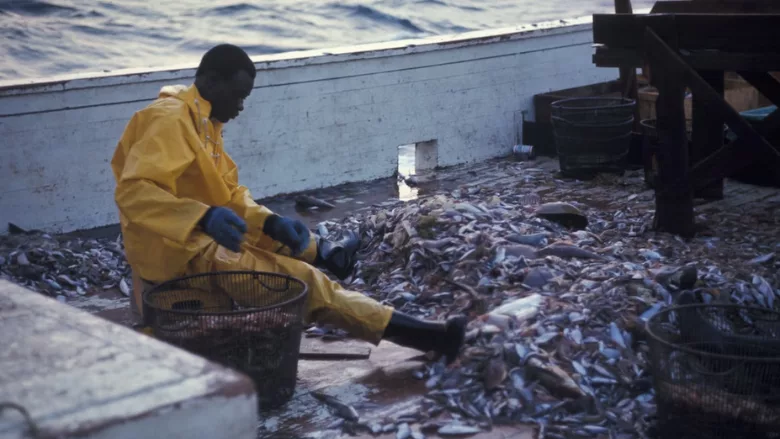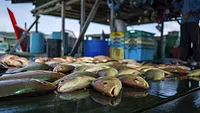FAO, WHO Report on Safe Use, Reuse of Water in Fish Industry

Credit: The U.S. National Oceanic and Atmospheric Administration (NOAA) via Unsplash
The Food and Agriculture Organization of the United Nations (FAO) and World Health Organization (WHO) have published a Joint FAO/WHO Expert Meetings on Microbiological Risk Assessment (JEMRA) report on the safety and quality of water used in the production and processing of fish and fishery products.
In 2020, the 43rd Session of the Codex Alimentarius Commission approved a document, titled, Development of Guidelines for the Safe Use and Reuse of Water in Food Production, proposed at the 51st Session of the Codex Committee on Food Hygiene (CCFH). To support this work, JEMRA was asked to provide scientific advice on sector-specific applications and case studies for determining appropriate and fit-for-purpose microbiological criteria for water sourcing, use, and reuse in fish and fishery products, from primary production to retail. The present report from JEMRA is the most recent in a series on fit-for-purpose water.
The report includes several case studies that describe water use and reuse scenarios, from which the experts drew various conclusions. The benefits and pitfalls of water quality monitoring and the use of non-culture based microbiological methods to assess water quality—such as immunoassays and nucleic acid—are also described in the document. Critical research gaps and policy needs to further enhance the safe use and reuse of water in fishery products are noted as well.
Overview of Water Use and Hazards
The report underlines the need to implement more sustainable practices for the management and efficient use and reuse of water resources in the fish production process, as well as a need to preserve and protect aquatic ecosystems. Any source of water can be used in primary production of fish and other aquatic organisms, provided that the risks are previously assessed, water quality is monitored, and the water complies with quality criteria defined by a risk assessment.
Water used in the fish industry can be sourced from the sea, estuaries, deltas, and lagoons; or, in the case of land-based fish farming systems, from springs, wells, rivers, lakes, surface runoff, groundwater, or municipal sources. Water sources are subject to detrimental effects from climate change, pollution associated with population growth and development, and increasing demands for food production and other uses. In the fish and shellfish production and processing industry, water is used for rearing or harvest; as an ingredient; to transport and convey products; to wash, cool, and cook food; to clean and sanitize facilities, utensils, containers, and equipment; and to make ice and glazed products.
The global burden of foodborne illnesses associated with fish and fishery products is uncertain, although it is thought to be substantial, and these products have most commonly been linked to infections and intoxications by norovirus, hepatitis A virus, Vibrio, Salmonella, Giardia, Cryptosporidium, Anisakis, and histamine. Water is a significant vehicle for microbiological contaminants, and some pathogens can remain infectious in sources of water for a considerable period of time.
Looking for quick answers on food safety topics?
Try Ask FSM, our new smart AI search tool.
Ask FSM →
Microbiological risks can be mitigated by a risk-based approach to water use, covering the whole water system from source to tap. Sanitary surveys and a hazards analysis and critical control points (HACCP)-based approach, such as water safety plans, are important to determine water fitness and the likelihood of contamination in the production and processing systems. Good hygiene practices (GHPs) should be applied at all steps of the supply chain.
The report acknowledges that, in many parts of the world, existing regulations limit the use of fit-for-purpose water and may not reflect current technological capabilities of water treatment. Additionally, many regulations do not sufficiently consider the widespread use of brackish water and seawater in the fisheries and aquaculture sector. Developing or improving regulations on quality and safety criteria for water sources, as well as minimum requirements for use in fish production and processing, would help establish a definition of fit-for-purpose water from different water sources and reuse applications.
Recommendations for Safe Water Use
Water use and reuse needs to be tailored to the particular conditions of specific fish production or processing operations, considering an operation’s potential reusable water sources, the various applications of the reused water, available recovery and treatment technologies, and the capabilities of the operator. Frequently, relevant information on source water quality can be obtained from water suppliers. For each possible water reuse scenario considered for implementation, it is recommended that operators consider the following in assessing and managing microorganisms in water use and reuse:
- Ensure the safety of water used in the production and processing of fishery products using a risk-based approach covering the whole water system from the source to the point of use, including upstream characterization of surface or groundwater quality in abstraction points to include the whole water catchment area
- Coastal sources, used for abstraction of seawater in land-based establishments, cannot be guaranteed to be free from pathogens from the marine biota or from fecal contamination, and cannot be classified as fit-for-purpose sources
- Seawater from offshore sources are generally considered safe, but depending on the geographical region and temperature, seawater can hold potentially pathogenic bacteria
- Define and employ risk assessment and management procedures and implement efficient monitoring plans according to recognized guidelines or standards
- During risk assessment, consider specific waterborne hazards (e.g., marine microbiological contaminants) that may impact the safety and quality of fishery products
- Where necessary, develop and apply a risk-based approach such as a water safety plan
- Validate the efficacy of disinfection practices to treat water sources, as well as any other water treatment that may be applied to the water used
- Assess all possible contamination risks from catchment areas, considering seasonal and climatic factors affecting source water quality through regular testing and development of farm-specific profiling and precautionary measures
- Implement operational monitoring of the water used in the production and processing of fishery products to provide insight into process performance and associated water quality issues, enabling rapid remedial action in the event of nonconformity
- Control the microbiological stability of finished products to confirm that food safety criteria are respected before marketing
- Implement GHPs throughout primary production and processing and provide training on GHPs
- Regulatory agencies and other relevant organizations should provide examples and training on how to use food safety plans and risk assessments to define water quality targets for fit-for-purpose water
- Strategies should be developed to overcome the negative perceptions that regulators, processors, and consumers have about the use of fit-for-purpose water
- In countries where safe water recycling and recuperation are currently improbable due to technical and financial barriers, ensuring the protection and sustainability of these sources should be of utmost importance
- In remote areas, provision of water wells and toilets for the local population will further reduce the risk of human exposure to pathogens and help regulate access and use of water sources
- Ensure that there is an adequate supply of drinking (potable) water and facilities for its storage and distribution to ensure the safety and quality of food.








